https://www.youtube.com/watch?v=y8wgXoPDnXQ
Homemade Pasta - Making and kneading dough
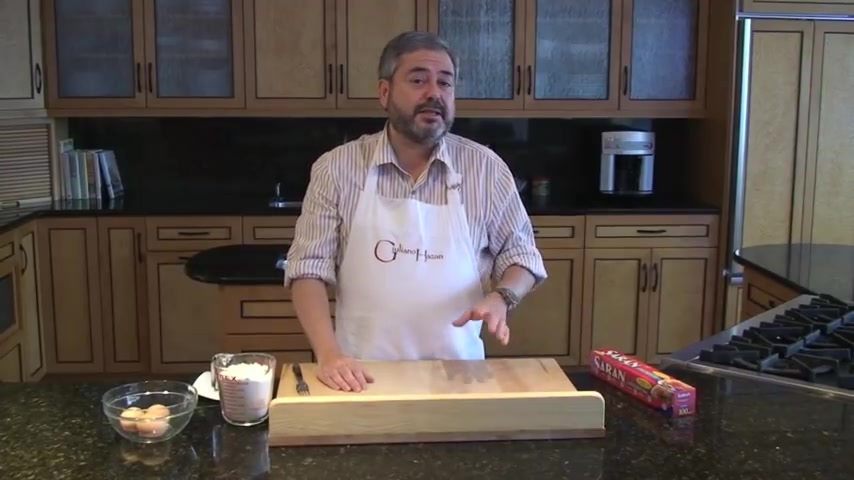
I'm Juliana Hazan and I'm gonna be making homemade egg pasta with you today .
I'm gonna be making the kind of pasta that we make in the , which is just with eggs and flour in other parts of Italy , they make it using a slightly different recipe , but in is where I grew up and this is how I learned it , pasta hates cold temperatures .
So that's why I'm using a wood counter .
You don't want to do it on granite like this or stainless steel .
You wanna use it a surface that is not inherently cold and then we're going to put some flour on our counter .
This is about two and a quarter cups of flour .
I am making three eggs of pasta here today .
And a good rule of thumb is to start with approximately three quarters of a cup of flour and this is all purpose , unbleached flour to one egg .
So three eggs is two and a quarter cups .
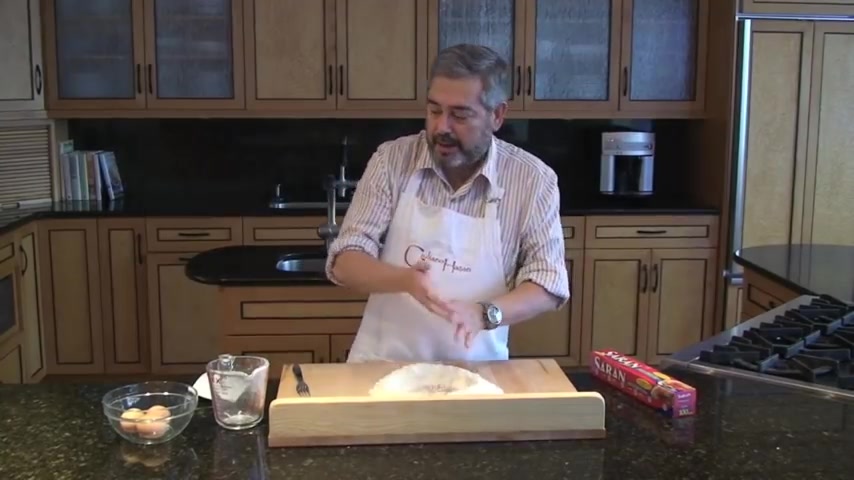
So you see , I'm creating a space inside here that I can mix the eggs in .
You wanna make a , well , that is really spacious enough so that the eggs won't run over .
And then when you're ready , you break your eggs inside like this and the eggs should not be straight from the refrigerator because remember pasta hates cold temperatures and we don't want to put the shells in there .
Just the eggs like this .
And then we're gonna mix up the eggs a little bit , like making an omelet .
Ok .
So you can use a fork and just zoom in .
So you can see how I'm doing .
There you go , just mix them up so that the yolks and the whites are mixed together .
And then we're ready to start incorporating a little bit of flour .
And I want to bring the flour in from the sides like this .
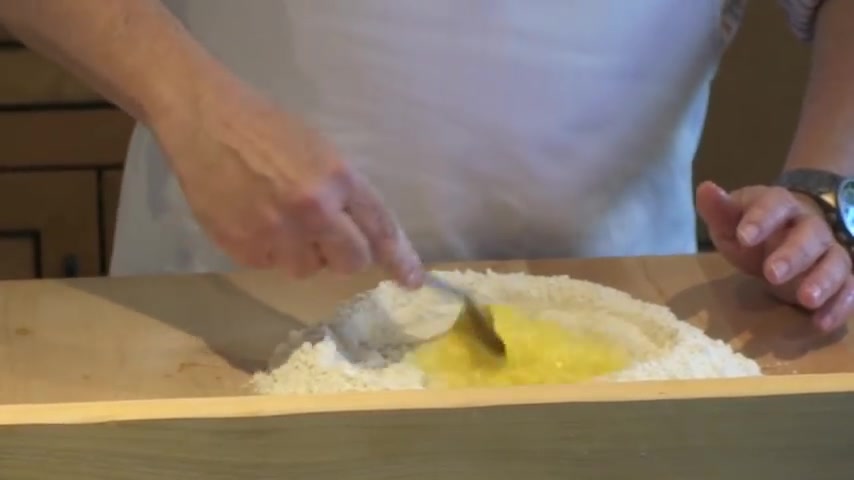
And I use the fork to do that and I don't want to break the wall because I don't want the legs to run out .
And then you just keep on mixing with your fork like this and you keep on doing this until you get to a consistency that's firm enough so that you can just work it with your hands and then we'll be getting rid of the fork .
And you see there's no exact proportion of flour to eggs because sometimes eggs are a little bit bigger .
Sometimes it's a little bit more humid or more dry in the air when this mixture is thick enough and we get rid of our fork .
You see , I squeeze it out with my fingers like this .
I'm gonna push some of the flour aside OK , we can always add some more , but we can't take it out and this is a little bit more probably than we're going to need .
And then I'm ready to bring the flour in like this with my hands .
This isn't a scary step .
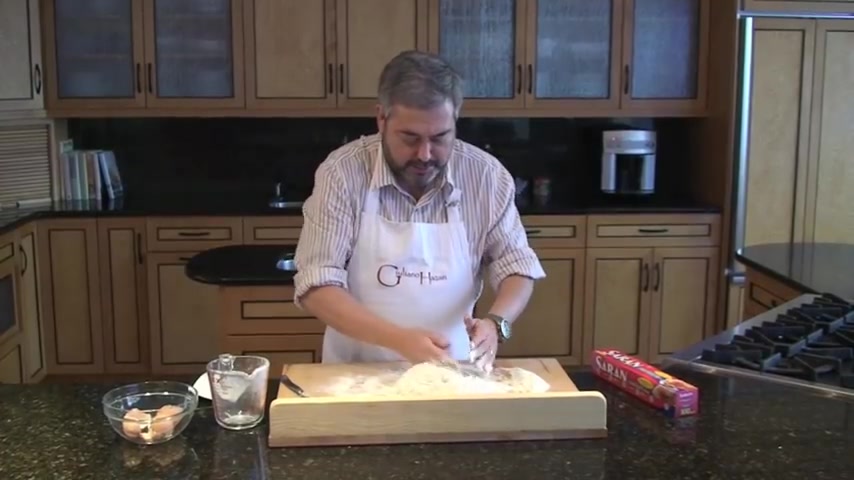
It's uh thick enough now that it's not gonna be too rummy and you just keep on pushing it in towards the center with your hands like this .
And this is really to create a dove and see whether we have the right proportion of flour .
The needing part is actually going to be the next step .
This step is really just about mixing the flour with the eggs and seeing whether it's the right amount .
Now , once you get the hang of it , you'll get a feeling , you know , by how firm or how soft it is .
But the first few times , but you one good way to tell whether you have enough flour or not is to see how sticky it is .
When the dough is sticky , then it means it needs a little bit more flour and you can use a scraper so you can scrape it the bits at the bottom of the board and work them into the dough like this .
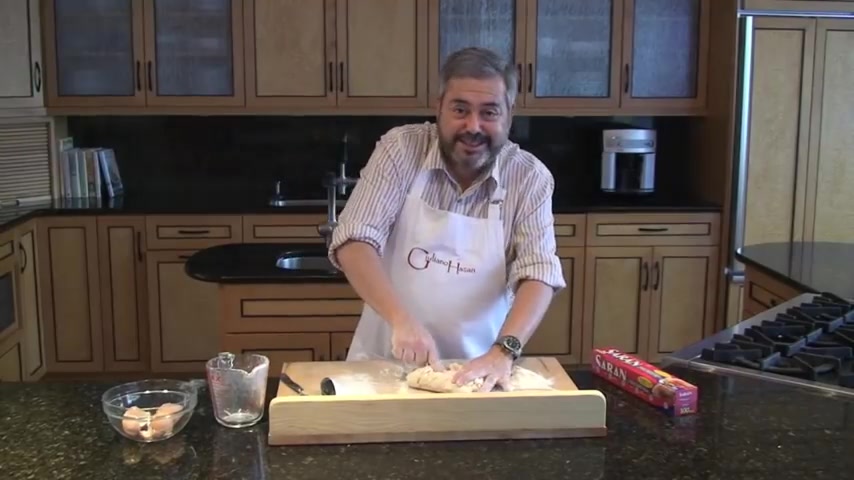
And one good way to tell whether it's too sticky or not is to clean off a finger and just stick it inside like this .
And it should come out feeling a little bit moist but not too , too sticky .
So I think I've got more or less .
I think this is the right amount now .
So , what I'm gonna do now is temporarily put the dough inside some plastic wrap because you see , you don't want to leave the dough out even just a little bit because it will dry out .
So put it in some plastic wrap like this and set it aside for a moment .
And in the meantime , I'm gonna clean up my door with a scraper .
See I don't want any of those dried bits getting stuck into the dirt , a nice clean counter and then I'm gonna clean my hands as well .
So they don't have any dried bits here .
So I'll be right back .
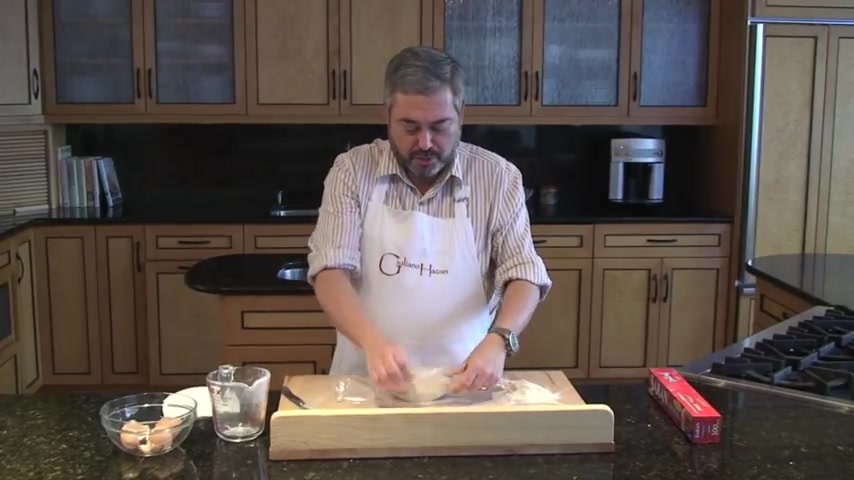
Now .
I have my hands clean and we're ready to need the dough .
So what you need , what you want to keep in mind is that you wanna stretch the dough , you don't wanna just compress it .
So we're not gonna just go press down like this .
We're gonna down and out like this .
So this is the movement that we're going to do .
We're going to hold the dough with the fingers of one hand .
We're gonna fold it over with the fingers of the other hand like this .
And then using the heel of your palm , you see the bottom part right here , not the middle , but the bottom part .
You place the heel of your palm behind the dough and then you're gonna press into the dough as you're rolling it on the counter up until your palm gets to where it's about halfway into the dough and then pull the dough back again , folding over again , repeat the same thing .
Put the heel of your palm behind it , push down and away from you .
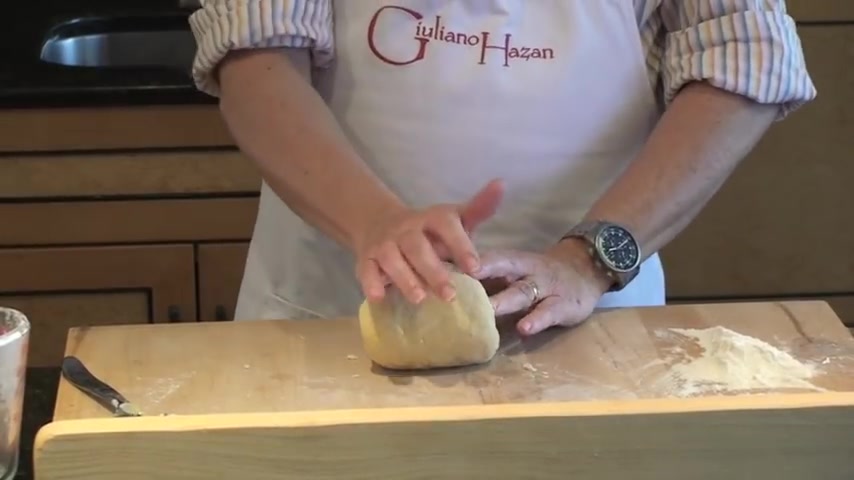
And then we're gonna turn the dough 90 degrees and repeat again , fold over like this , put the heel of your palm behind the dough , press down and out like this .
So you do it twice in the same direction and then you turn the dough and repeat once and twice , then turn and once and twice , just like this .
Now , what I do is actually , I alternate hands .
I do one like this and then my right and then my left and my right and my left .
Now you see how the dough is kind of rolling on the counter .
You see it's not just staying still if I press down the bill doesn't move .
But if I press down and away from me , it kind of rolls on the counter .
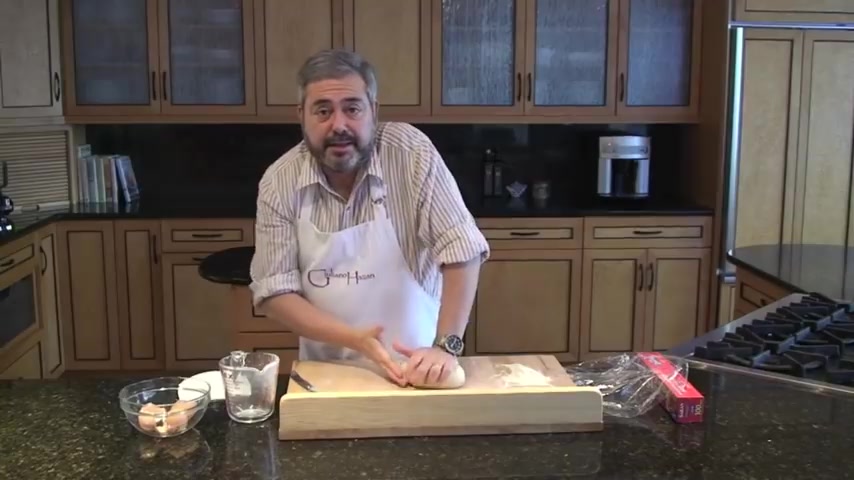
Now as you're doing this , if you feel that the dough is really too sticky on your hands or it's sticking to the board , then it just means that it needs a little bit more flour .
So you just Sprinkle a little bit of flour , show you just a little bit here , Sprinkle a little bit of flour counter and just keep on kneading on top of the flour and the flour will get incorporated into the dough .
And the reason we want to try and get the right amount of flour in as soon as possible , as early on as possible is because the farther along you are , the longer it takes for the flower to get incorporated into the dough .
Now , you don't need to need forever .
Uh , once you've gotten the right proportion of flour in , you know , 33 to 5 minutes is plenty of time to need the dough .
You really only need to need it as long as it takes for the dough to become nice and homogeneous and smooth .
So you don't feel any flour on the surface anymore .
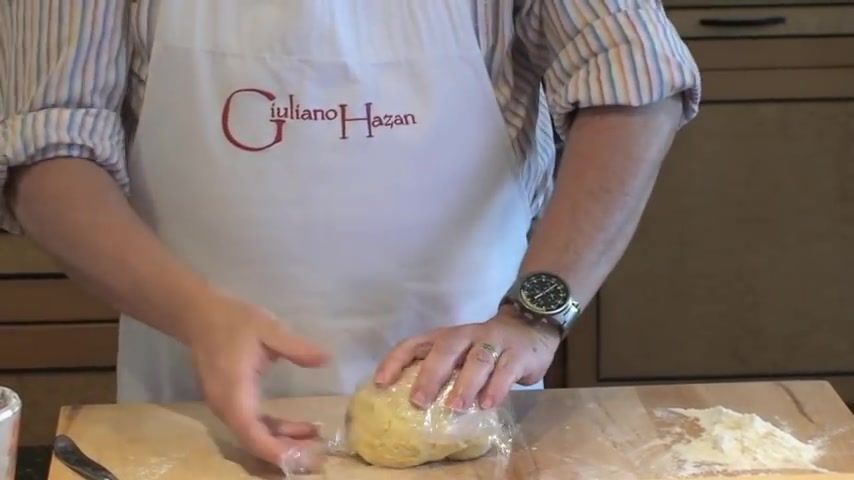
You don't feel any stickiness from the eggs inside either and you just keep on going like this alternating one hand .
OK .
Here we are .
I finished kneading that you see , it's nice and smooth and homogeneous .
So now I'm gonna put it back into my plastic wrap and the dough needs to rest for a little bit .
And what happens while it rests is that the gluten in the flour relaxes ?
And what that does is that it allows us to stretch the dough when we roll it out .
Otherwise it'd be like the rubber band effect where it would come back .
So we're gonna let it rest for about 20 minutes , but you can even leave it on the counter for two or three hours and it's fine .
Just don't put it in the refrigerator because remember pasta hates the cold .
Are you looking for a way to reach a wider audience and get more views on your videos?
Our innovative video to text transcribing service can help you do just that.
We provide accurate transcriptions of your videos along with visual content that will help you attract new viewers and keep them engaged. Plus, our data analytics and ad campaign tools can help you monetize your content and maximize your revenue.
Let's partner up and take your video content to the next level!
Contact us today to learn more.